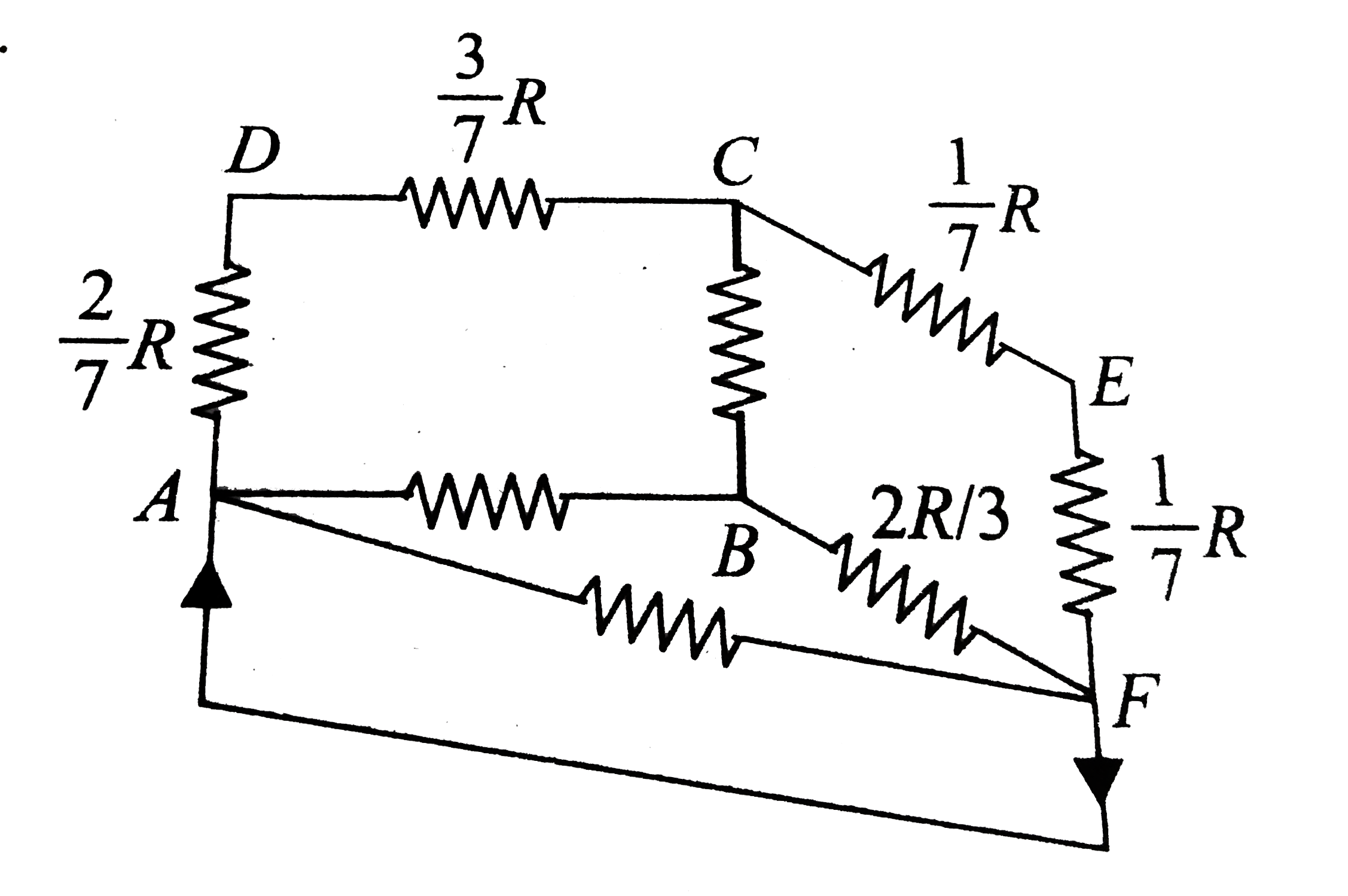The net resistance of a volmeter should be large to ensure that
(a)it does not get overheated
(b)it does not draw excessive current
(c )it can measure large potential defferences
(d)it does not apperciably change the potential difference to be measured.
The correct Answer is:D
To solve the question regarding why the net resistance of a voltmeter should be large, we can break it down into the following steps:
1. Understanding the Function of a Voltmeter:
- A voltmeter is an instrument used to measure the potential difference (voltage) between two points in an electrical circuit.
2. Connection of Voltmeter in a Circuit:
- A voltmeter is connected in parallel with the component (like a resistor) across which the voltage is to be measured. This is essential because it allows the voltmeter to measure the voltage drop across that component without significantly affecting the circuit.
3. Effect of Voltmeter Resistance:
- The resistance of the voltmeter must be very high. This is because if the voltmeter has low resistance, it will draw a significant amount of current from the circuit. This can lead to a situation where the voltmeter itself alters the current flowing through the circuit, thereby affecting the voltage reading.
4. Ensuring Accurate Measurement:
- By having a high resistance, the voltmeter draws negligible current. This ensures that most of the current in the circuit flows through the main branch (the component being measured), allowing for an accurate measurement of the potential difference across the terminals.
5. Conclusion:
- Therefore, the net resistance of a voltmeter should be large to ensure that it does not affect the circuit operation and provides an accurate measurement of the voltage across the component.
Final Answer:
The net resistance of a voltmeter should be large to ensure that it draws negligible current, allowing for an accurate measurement of the potential difference across the component without significantly affecting the circuit.
---
- A voltmeter is an instrument used to measure the potential difference (voltage) between two points in an electrical circuit.
- A voltmeter is connected in parallel with the component (like a resistor) across which the voltage is to be measured. This is essential because it allows the voltmeter to measure the voltage drop across that component without significantly affecting the circuit.
- The resistance of the voltmeter must be very high. This is because if the voltmeter has low resistance, it will draw a significant amount of current from the circuit. This can lead to a situation where the voltmeter itself alters the current flowing through the circuit, thereby affecting the voltage reading.
- By having a high resistance, the voltmeter draws negligible current. This ensures that most of the current in the circuit flows through the main branch (the component being measured), allowing for an accurate measurement of the potential difference across the terminals.
- Therefore, the net resistance of a voltmeter should be large to ensure that it does not affect the circuit operation and provides an accurate measurement of the voltage across the component.
The net resistance of a voltmeter should be large to ensure that it draws negligible current, allowing for an accurate measurement of the potential difference across the component without significantly affecting the circuit.
Topper's Solved these Questions
- ELECTRIC CURRENT IN CONDUCTORSBOOK - HC VERMA ENGLISHCHAPTER - ELECTRIC CURRENT IN CONDUCTORSEXERCISE - objective 2
9 Videos
- ELECTRIC CURRENT IN CONDUCTORSBOOK - HC VERMA ENGLISHCHAPTER - ELECTRIC CURRENT IN CONDUCTORSEXERCISE - Exercises
84 Videos
- ELECTRIC CURRENT IN CONDUCTORSBOOK - HC VERMA ENGLISHCHAPTER - ELECTRIC CURRENT IN CONDUCTORSEXERCISE - worked out Example
33 Videos
- DISPERSION AND SPECTRABOOK - HC VERMA ENGLISHCHAPTER - DISPERSION AND SPECTRAEXERCISE - Question for short Answer
6 Videos
- ELECTRIC CURRENT THROUGH GASESBOOK - HC VERMA ENGLISHCHAPTER - ELECTRIC CURRENT THROUGH GASESEXERCISE - Short answer
6 Videos
Similar Questions
The net resistance of an ammeter should be small to ensure that
View SolutionThe net resistance of an ammeter should be small to ensure that
View SolutionThere is an infinite wire grid with cells in the form of equilateral triangles. The resistance of each wire between neighboring joint connections is R0 The net resistance of the whole grid between the points A and B as shown in fig.

View SolutionShould the resistance of an ammeter be low or high ? Give reason.
View SolutionAssertion : Voltmeter is connected in parallel with the circuit
Reason : Resistance of a voltmeter is very large.
View SolutionThe current enters at A and leaves at F. The values of some resistance are shown. What should be the value of resistance AB so that no current will flow through CB?

View SolutionA galvanmeter of resistance G is converted into a voltmeter of range 0 -1V by connecting resistance R1 in series with it. The additional resistance that should be connected in series with R1 to increase the range of the voltmeter to 0-2 V will be :
View SolutionConsider the potentiomter circuit diagram as shown in the figure. If the potentiometer wire BD has net resistance of 15Omega, the choose the correct statement
_PHY_E01_009_Q01.png)
View SolutionThe current enters at A and comes out at D. Some of the resistance are shown. What should be resistance of wire CB so that it draws double of the current that enters the wire BF.

View SolutionIn order to determine the internal resistance of a primary cell by means of potentiometer the emf of the battery connected across the ends of the potentiometer wire should be
View Solution
